artworks, artists and exclusive offers. Sign up now
[SHOWS] Cinga SAMSON @ Galerie Perrotin, New York
APRIL 3, 2020
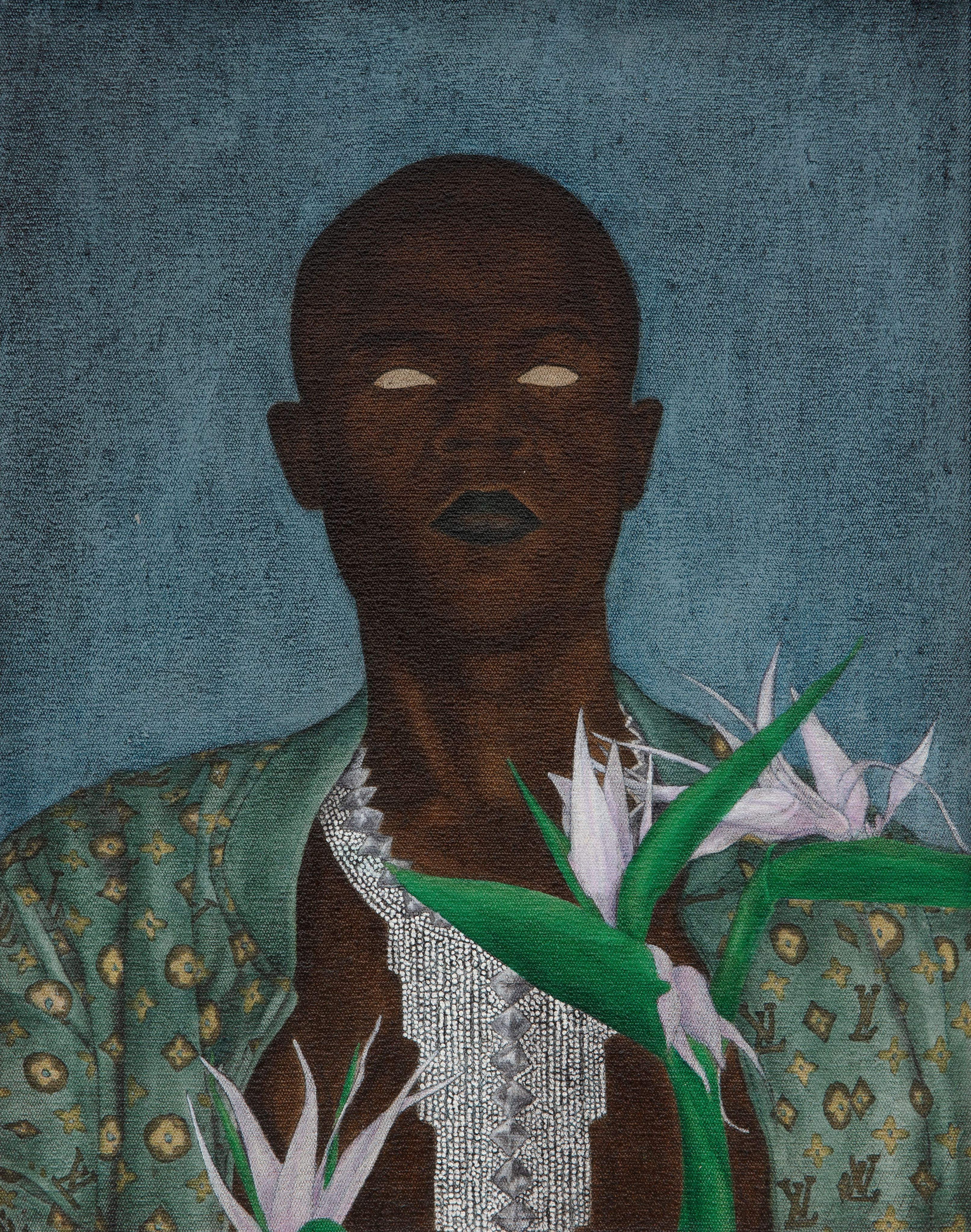
Photograph: Galerie Perrotin website
Opening Saturday, February 22, 6-8pm
February 22 - April 11, 2020
Perrotin is pleased to announce Amadoda Akafani, Afana Ngeentshebe Zodwa (men are different, though they look alike), an exhibition of 28 new paintings by Cape Town based artist Cinga Samson, marking the artist’s first solo exhibition at Perrotin. Cinga Samson was born in Cape Town in 1986, and grew up between the city and the rural region of Transkei. Originally a photography student, it was fifteen years ago that Cinga began to pursue fine art painting. This medium shift was inspired by two factors: his discovery of the Isibane Creative Arts studio and his mother. In 2006, he stumbled into Isibane Creative Arts in Khayelitsha, Cape Town – an art studio that was home to artists whose work explored black life in the townships.
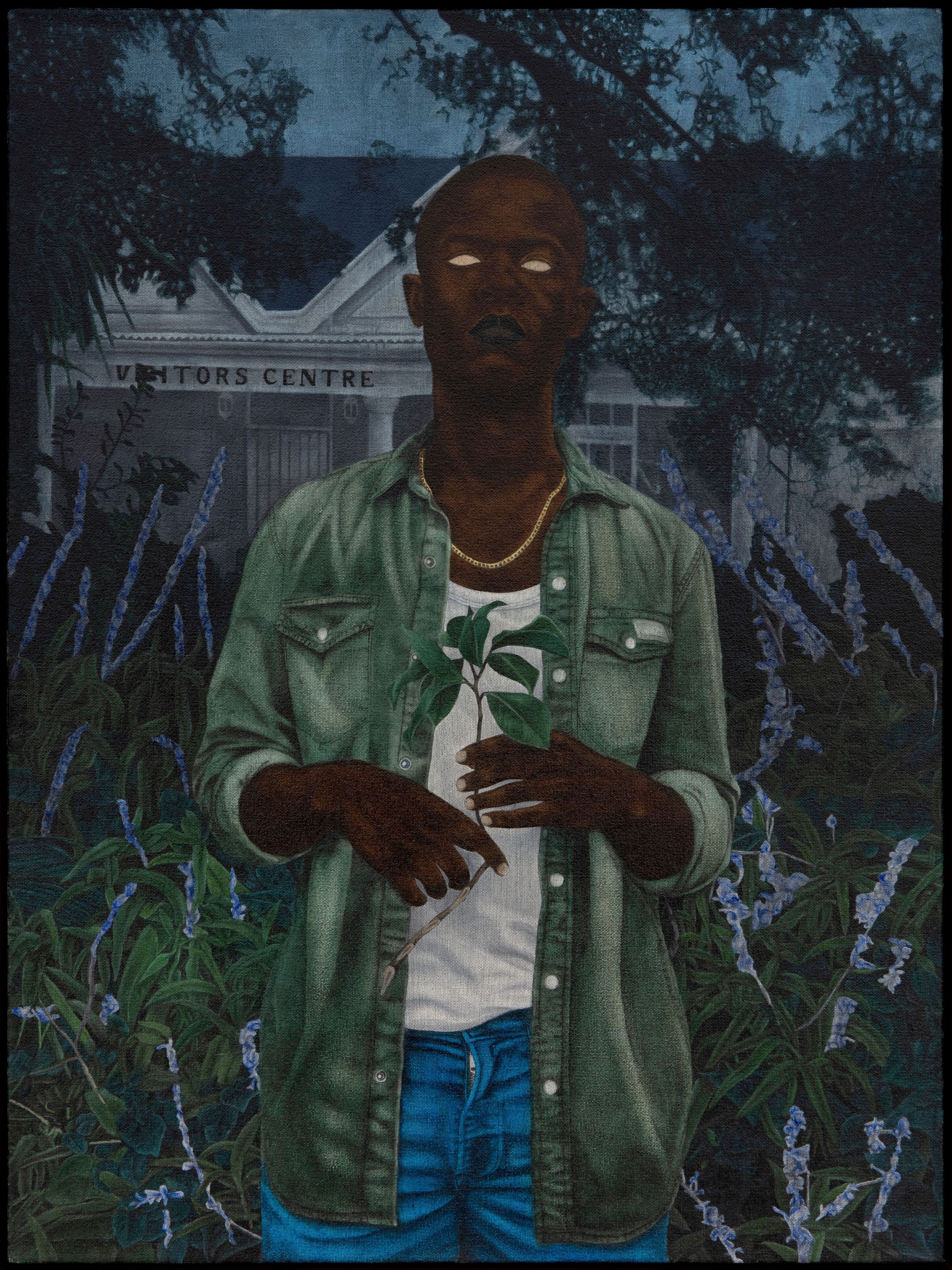
The
group took Samson in and under their tutelage he began to experiment with paint – initially mimicking the group’s different
styles, and eventually authoring an artistic language of his own. His mother also played a large role in his transition towards
painting. The artist recalls how, when he was young, his now late mother would plant a hedge of Cannas along the fencing
of their house, and how this flower acted as inspiration for nearly all of his initial works.
130 Orchard Street
New York, NY 10002
Tuesday - Saturday
10am - 6 pm
Ivory (II), 2018. Oil on canvas. 119 x 94 x 4.5 cm. | 46 7/8 x 37 1/16 x 1 3/4 in. Photo by Claire Dorn.
Courtesy of the artist and Perrotin.
NEW YORK
As the painter matured, the still life flower gave way to more figurative works.
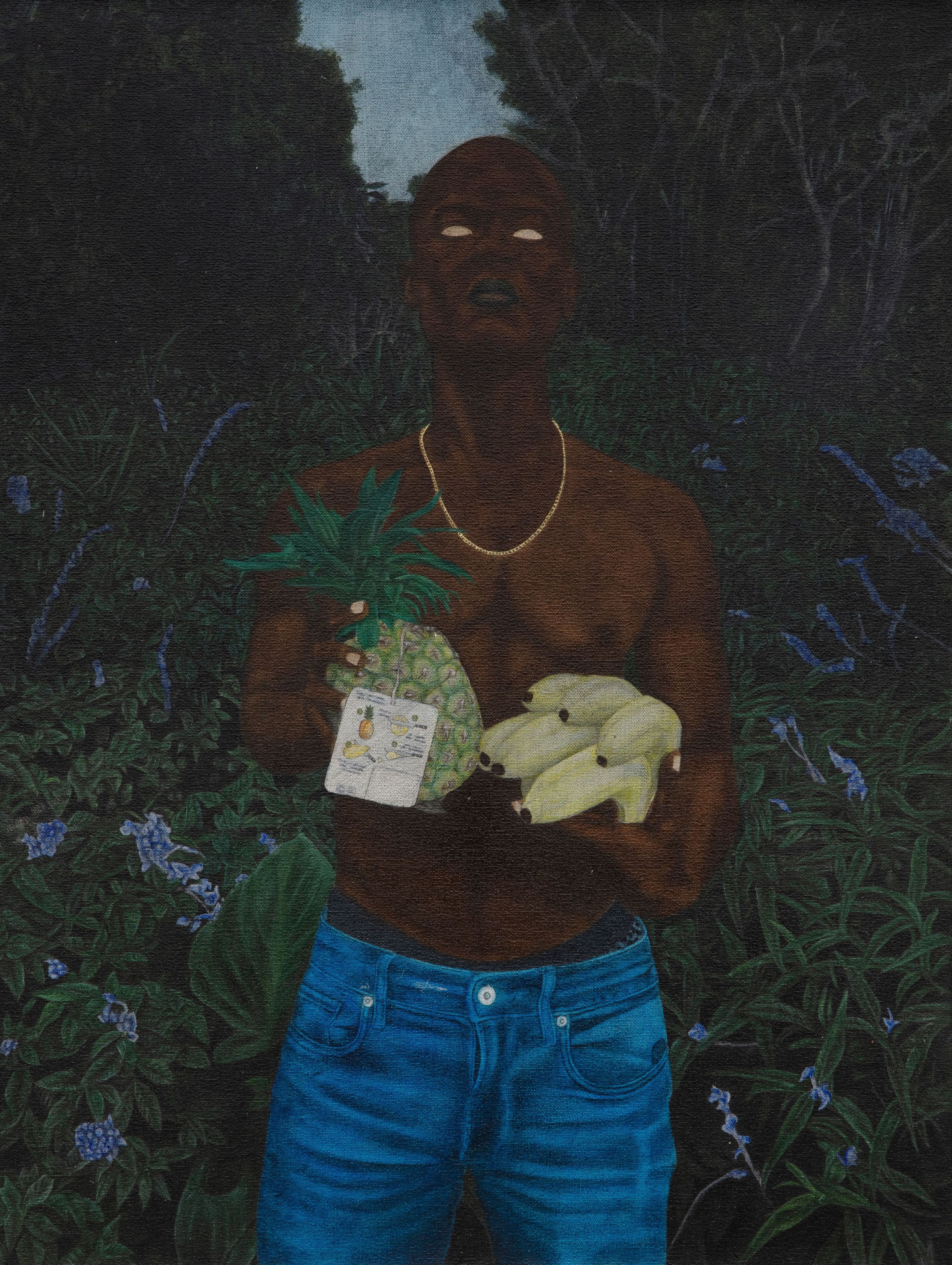
The works, often depicting African men in stylized poses – sometimes languid and divested of energy; at other times erect and confident, staring out of the canvas with eyes painted white – recall old portraits African men would send home to reassure loved ones of their prosperity. Historically, these men were driven to mining towns, such as Johannesburg or the harbor in Cape Town, in order to earn money for the hut tax imposed by the Cape Colony on black Africans. In these portraits, later captured in popular black magazines in South Africa during apartheid, one would find up-rooted men spiffily dressed, showing off their newfound status through clothes and shoes – frequently alongside a fern or a tree. In the portraits, it was not un-common to find men smiling, exuding confidence in their youth. However, in Samson’s work, this smile is lacking. Instead, what one finds is something darker and more haunting, like a Shakespearean apparition or spirit. And yet, the painter finds beauty in the haunting figure.
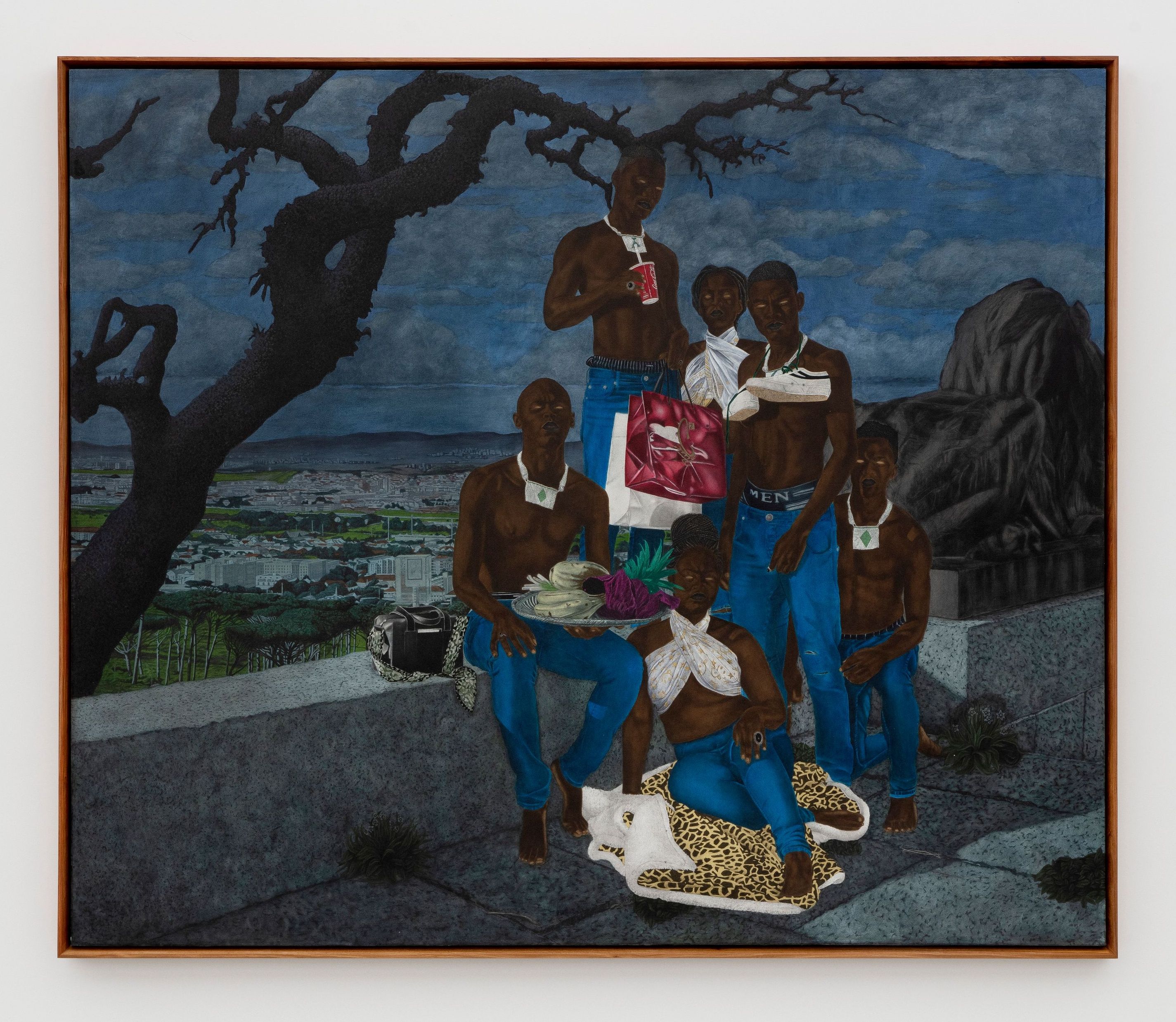
This beauty is universal, encompassing all life, whether human or natural. However, he insists, it is not
an innocent beauty, a beauty devoid of risk: “With the impressionists, for example, everything is beautiful without risk.
Everything’s saturated with light. But I’m not interested in that. I want to do work in which there’s risk implied in what’s
deemed beautiful. It’s the same with people.”
Throughout the exhibition, Samson depicts men and women posing together at the Rhodes Memorial in Cape Town. Cecil
John Rhodes was a British Imperialist and mining magnate who has been at the center of discourse around decolonization.
His statue was removed from Cape Town University, following a protest that subsequently sparked wider discourse around
the decolonization of education across South Africa. Samson says, “My own thinking was that we are going to shoot at
night and we’re going to haunt this space… this legacy. We’re going to haunt Rhodes.
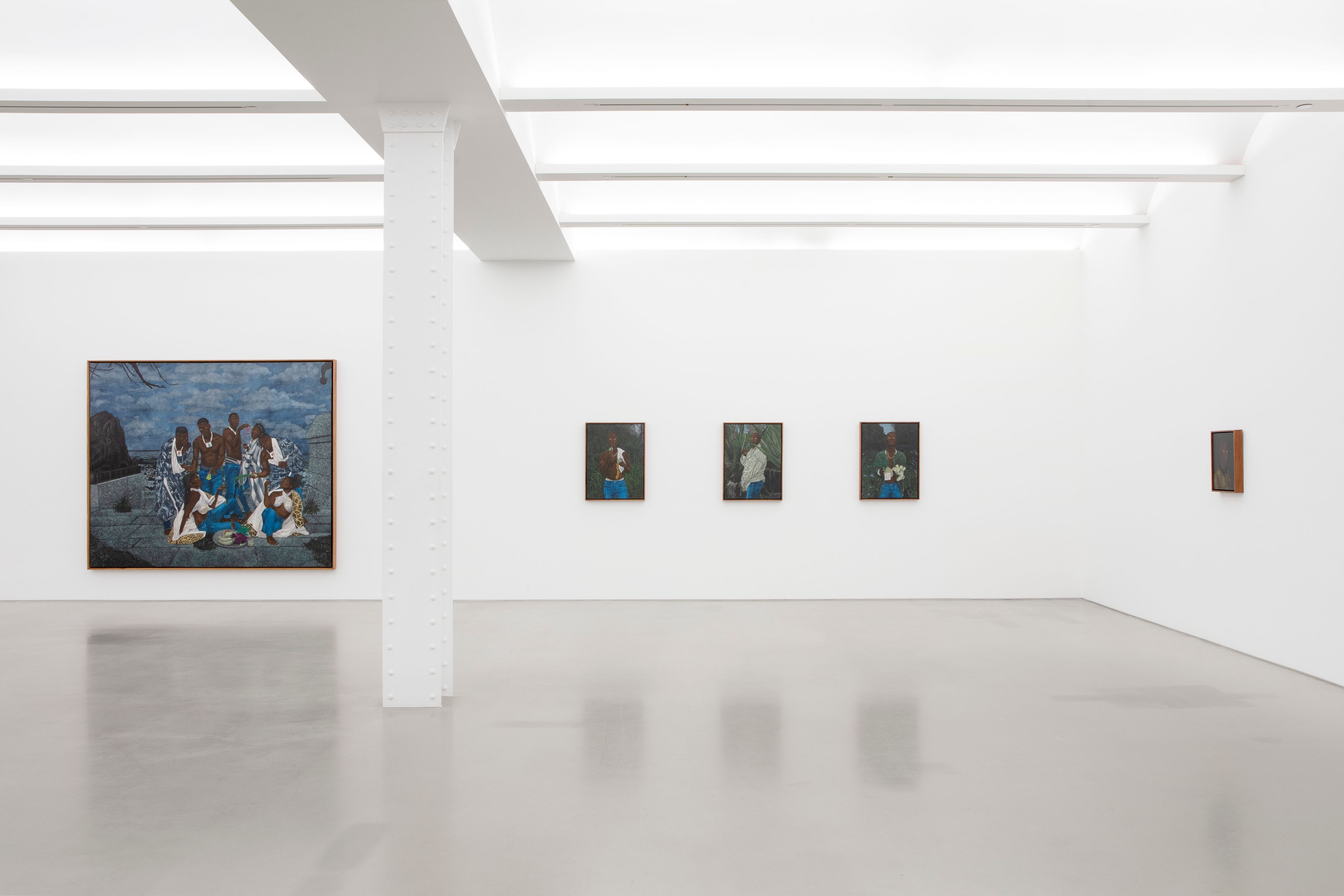
I wanted us [black people] to look
good in that space, to feel like we own it, like we belong – the way our ancestors might have felt.”
Similar to previous work, the new series of paintings are lush with nature. This stylistic approach again points to those
earlier, historical portraits of black men posing amongst ferns.
There are a couple of things in nature that fascinate me and I’m trying to develop a language that can cope
with that. For instance, you look at a fish and you think it’s silver or greyish, but when that fish bends you see
6, 7, 8, 9, 10 colors in a split second. Look at it again, and you’ll find that what you just saw is no longer there.
As a painter, as someone who works with colors, that just blows my mind away. For instance, in some of the
works I prepared for this show, I used 6 colors. You get a bit of burnt amber, some Parisian blue, a slight green
but it still all looks like one uniform tone. If you look closely, you can distinguish these different colors. These
are just some of my attempts to develop a language that mimics colors in nature. I’ve been trying for years, but
it’s only now that I’ve used colors this way – that they give more than one color at once.
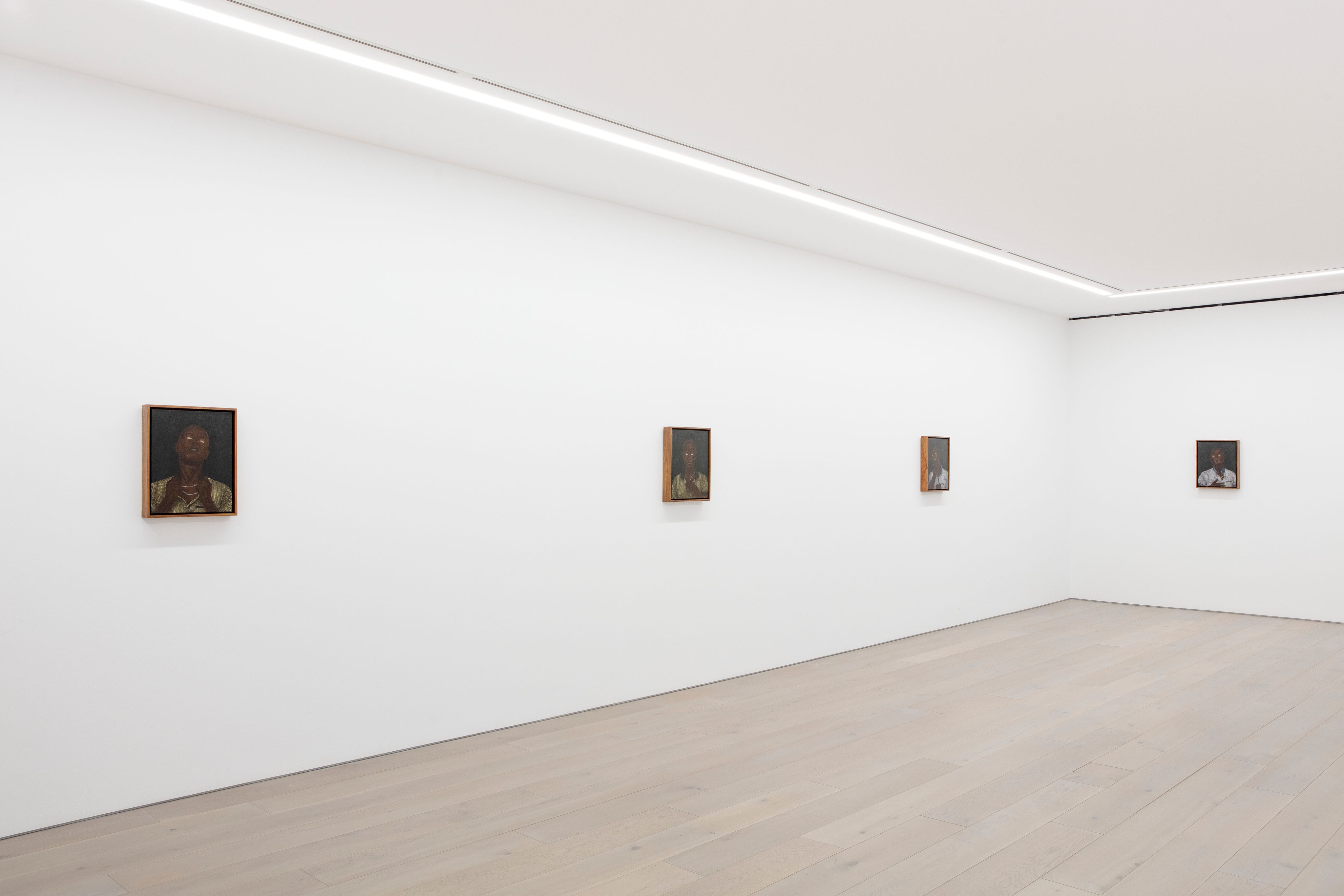
The title of the exhibition – Amadoda Akafani, Afana Ngeentshebe Zodwa (men are different, though they look alike) – are words from Samson’s father. His father had expected him to pursue a profession that would be financially stabilizing. Considering the legacies of colonialism and apartheid – the vast inequality that dogs South Africa to this day and the transience of black life – his father’s concerns weren’t without cause. His father, the artist says, said those words to affirm him and his choices, to affirm his individual humanity and his decision to pursue art. Samson comments on the new body of work: “I want the work to make you feel like you’re intruding. I want the painting to own the space you stand in, the space you occupy when you look at it. I want it, the painting, to be aware of your presence, inasmuch as it is aware of itself. The painting is not for you. The painting is for itself.” Lwandile Fikeni

| Prev | [SHOWS] THE SOVEREIGN CITIZENS SESQUICENTENNIAL CIVIL WAR CELEBRATION @ Sprüth Magers, Berlin |
|---|---|
| Next | [SHOWS] Piero Golia @ Gagosian, London |
| List |